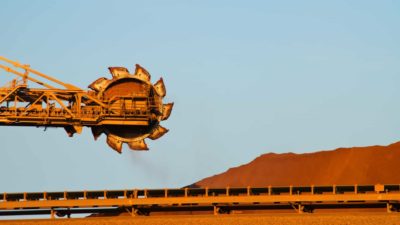The Pilbara Minerals Ltd (ASX: PLS) share price has been one of the best performers in the S&P/ASX 200 Index (ASX: XJO) over the past year. It has only been the ASX coal shares that have significantly outperformed this ASX lithium share.
In just 12 months, Pilbara Minerals shares have gone up by 118%. More than doubling one's money in a year, amid all the volatility, has been a great result for shareholders.
But, you might think that the company is now expensive after going up so much in a relatively short amount of time.
There are many different ways to value a business. But, one of the easiest ways to compare businesses is by looking at the price/earnings (P/E) ratio. This shows what multiple of the earnings the share price is currently valued at.
Not only can we use the last financial year to work out the valuation of a business, but if we can use the estimated earnings for the current/next financial year, then we can hopefully get a good insight into what the market is truly pricing a business at, including expectations.
What is the P/E ratio of the ASX lithium share?
Before I get to the valuation of the ASX lithium share, I'll show some other P/E ratios to put it in perspective.
Businesses like ASX 200 bank shares are usually priced at a fairly low multiple of their earnings. Some sectors usually have a low P/E ratio if they are expected to grow slowly, have large balance sheets and/or if their earnings are expected to be (at best) volatile/uncertain.
I'll use the profit projections from Commsec to demonstrate some other valuations.
National Australia Bank Ltd (ASX: NAB) shares are valued at 13 times FY23's estimated earnings.
Commonwealth Bank of Australia (ASX: CBA) shares are valued at 18 times FY23's estimated earnings.
Wesfarmers Ltd (ASX: WES) shares are valued at 24 times FY23's estimated earnings.
CSL Limited (ASX: CSL) shares are valued at 34 times FY23's estimated earnings.
WiseTech Global Ltd (ASX: WTC) shares are valued at 76 times FY23's estimated earnings.
What about the Pilbara Minerals share price?
According to estimates on Commsec, the ASX lithium share is priced at 7.6 times FY23's estimated earnings. In other words, it is valued at under 8 times its projected earnings for the 2023 financial year.
By using that metric, it makes it seem like the miner is the cheapest business out of all the ones that I've mentioned.
Is the Pilbara Minerals share price cheap?
Some, perhaps many, investors wouldn't say it's cheap.
At the moment, the miner is making a lot of cash flow and net profit after tax (NPAT).
But, it's benefiting from the huge rise in the lithium price.
On 26 October 2021, just over a year ago, the first business announced the result of its third Battery Material Exchange (BMX) auction. It said it sold 10,000 dry metrics tonnes (dmt), with the highest bid being US$2,350 per dmt. This equated to a price of approximately US$2,629 per dmt after accounting for lithia content (and including freight costs).
A year later, on 24 October 2022, the business announced it had sold 5,000 dmt for US$7,255 per dmt. This equated to a price of approximately US$8,000 per dmt after adjusting for lithia content and including freight costs.
It seems almost certain that lithium demand will continue to rise in the coming years as electric vehicle production and battery usage grow.
But, will the lithium price stay elevated? How much more lithium supply is going to come onto the market?
If the lithium price were to stay at this level for a decade, then the Pilbara Minerals share price may look cheap today, particularly as it gets involved in more of the lithium value chain.
But, a low P/E ratio for FY23 alone doesn't make it cheap. Brokers like UBS and Credit Suisse both have sell ratings on the business, with price targets that imply a drop of at least 40%. They suggest that other large lithium miners, such as Allkem Ltd (ASX: AKE) could be better value.









